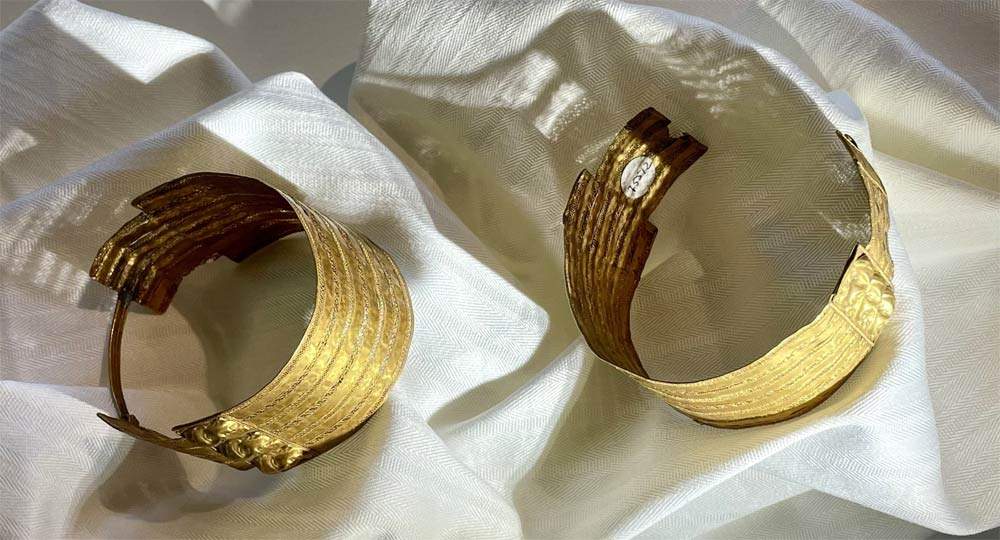The gold of the Etruscans and their trade. An exhibition on the island of Elba
Until Oct. 2, the Archaeological Museum of the Mining District in Rio di Rio nell’Elba, onElba Island, is hosting The Iron and the Gold. Mediterranean Routes between Etruria and the East, curated by Marco Firmati, director of the museum, in collaboration with the National Archaeological Museum in Florence. It is a review dedicated to the intense commercial and cultural relationship that was established between Etruria, Greece and the Near East between the 8th and 7th centuries BC. At the origin of the flow of sailors and goods are the metals of the Tuscan coast and the iron of Elba, which stood out for its richness and ease of embarkation, while the valuable artifacts of eastern imports trace the cabotage route to the mining districts of Etruria
In the exhibition a selection of objects, preserved in the National Archaeological Museum in Florence, that made up the sumptuous grave goods of the monumental noble tombs of mining Etruria testifies to this happy period in Etruscan history, understandably termed “orientalizing,” being characterized by the prolific commercial and cultural relations with the eastern Mediterranean. Among the exhibits on display are a gold necklace with female head pendants from Tumulo della Pietrera, Vetulonia, dating from the second half of the seventh century B.C., the marvelous Situla of Plikasna, which represents a unicum both in form and in figurative imagery attested by the two engraved friezes, a true masterpiece of Chiusi craftsmanship.
In addition to the noble ornaments that manifest the luxuriant development of Etruscan goldsmithing, two portions of Etruscan stone statues found in the imposing Pietrera tumulus at Vetulonia are also on display: a head and a female bust with arms joined across the chest in the act of entreaty, inspired by the Eastern repertoire.
The exhibition also marks the rebirth of the Elban museum, which has undergone significant structural work since 2021, and is at the center of Elba etrusca, a program series of initiatives dedicated to Etruscan civilization on the island, with the scientific coordination of the Sistema Museale Arcipelago Toscano (SMART) together with the Pro Loco, all the island’s municipalities and Visit Elba. The program runs throughout the summer and fall months. The constantly updated calendar can be found at www.museiarcipelago.it.
 |
| The gold of the Etruscans and their trade. An exhibition on the island of Elba |
Warning: the translation into English of the original Italian article was created using automatic tools. We undertake to review all articles, but we do not guarantee the total absence of inaccuracies in the translation due to the program. You can find the original by clicking on the ITA button. If you find any mistake,please contact us.



























